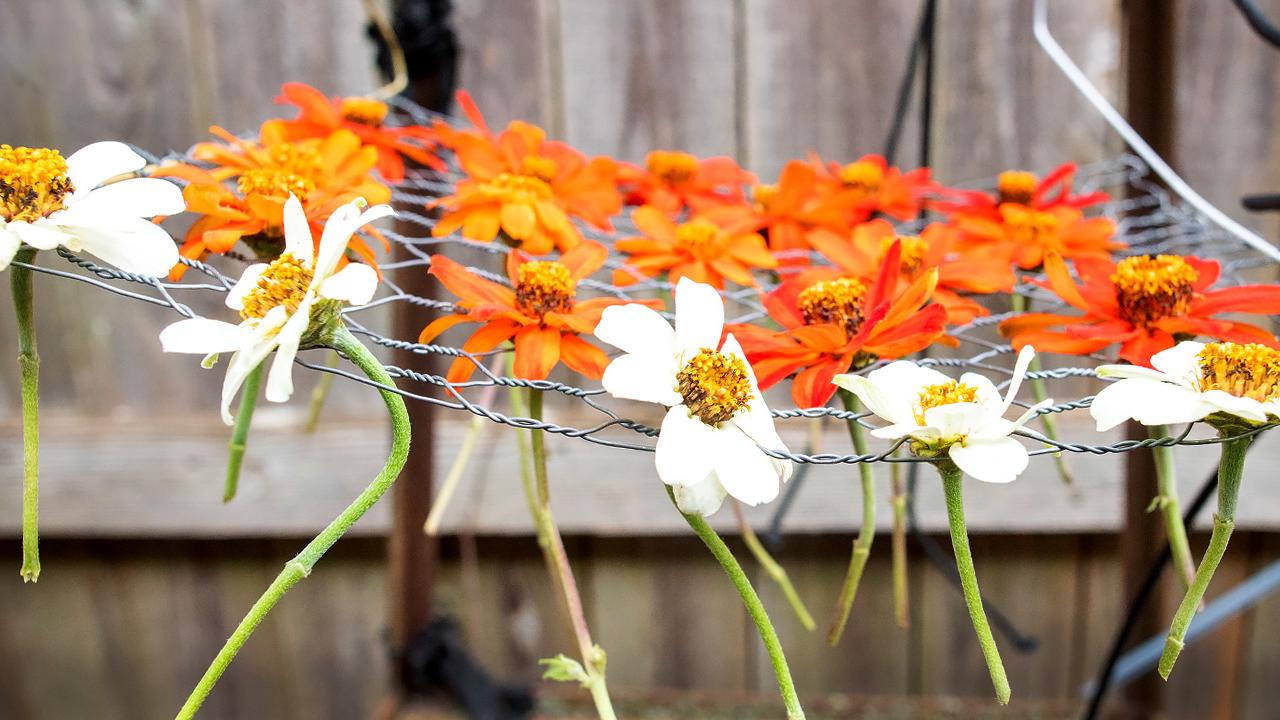

How-to
Garden Stories
Naturally Halloween
While stores can’t keep Halloween and fall decorations in stock this year—supply chain issues or maybe gremlins—we’ve got some DIY ideas. With a little help from nature, you can go Insta cool or full-on Martha Stewart. Capture the spirit of the season by using mostly found objects, materials you might already have, and some embellishments.
Here are some projects that I’ve worked on over the years. These ephemeral projects celebrate what’s happening now in gardens and then fade as the wonders of the next season take over.

Decorate it!
Pumpkin Project
Get the whole family involved in this fun activity. Give pumkins a quick coat of non-toxic water-based paint; then glue on decorations. Note that the glued-on items should be discarded before composting.
Project set up: Lay out a newspaper underneath and prop up a pumpkin on a brick outside before painting.
Stack it!
Leaf stack
On your fall walks, collect leaves and other natural materials that catch your eye and try the #leafstackchallenge that’s big on social media. Leave your stacks on a neighbor’s porch as a surprise, or, if you’re collecting edibles, arrange them on a plate and eat them. Above are some examples, using Japanese maples, gingko, elm, oak, maple, magnolia grandiflora, and hydrangea, embellished with ferns and rose hips, poppy pods and nuts. Afix a paper clip to the back of the leaf, and you’ve got a holiday ornament.

Pumpkin stack
Use a “cheese” pumpkin or other squat squash to create a wide, solid base, and then stack away. Add unexpected tinges of blue with Australian pumpkins.


Arrange it!
Fall cornucopia
Fill a grapevine twig cornucopia with clippings from your garden or found natural material. You can add your cornucopia to a tabletop or hang it on the front door.
Start with a bit of floral foam and tuck in or use a glue gun to secure items such as stiff-stemmed grasses in flower; small gourds or nuts; a few stems of colorful kale (green, lacinato, or redbor); sprigs of bright green chrysanthemum, dried hydrangea, soft white pine needles, pinecones, etc.
Sprout it!

Tabletop topiary
Materials:
- Styrofoam cone
- Green sheet moss
- Freshly harvested brussels sprouts
- Toothpicks/ floral picks
- Glue gun
Cover a cone form in sheet moss—easily found at a craft store— and pin or glue in place. Use picks to insert sprouts into the cone. Begin by affixing spouts in a diagonal row from top to bottom around the cone. Repeat. Refrigerate at night to extend the life of the topiary.

Group it!
Fall arrangements
Pair foraged elements like fallen oak leaves with houseplants, candles, fresh-cut garden flowers, and some gourds. Groupings create impact. You can clip branches of oak leaves and bunch them together with twine. Stand them in urns outside, or in baskets inside. Tuck in berries, dried grasses, and seed pods to add color and texture. Add shallow baskets of chestnuts, acorns, and pine cones.
Drop by the Regenstein Fruit & Vegetable Garden at the Chicago Botanic Garden to see a full slate of cool season crops, such as fall cabbage and brussels sprouts, as well as inspiration for your own garden. We’re harvesting Jerusalem artichokes, horseradish, and onion, and planting garlic and shallots.

